
So too is our education divided into the liberal arts and vocational training. We train the mind, or we train the body; and especially in the former instance, we sometimes find it hard to deal with the ways in which motions of the body are involved in the motions of the mind.
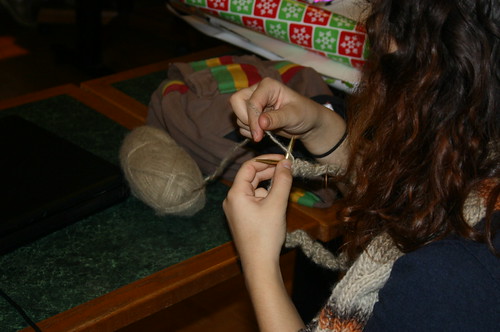
There is some acknowledgement that manual skills are worthwhile in the sciences. More open and consistent are the fine arts; think how integral the body and its training is to the production of musicians, sculptors, and actors.
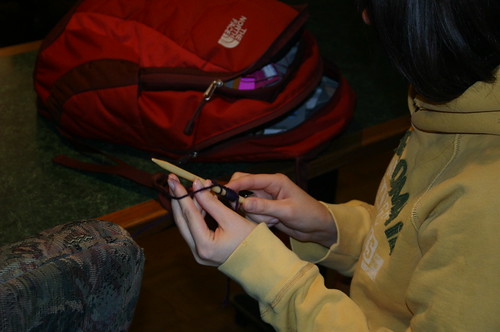
But it takes only a moment's reflection on the athletic department, and on the debates it raises in the context of education, to see how thoroughly we tend to separate the mind and the body in our practice.
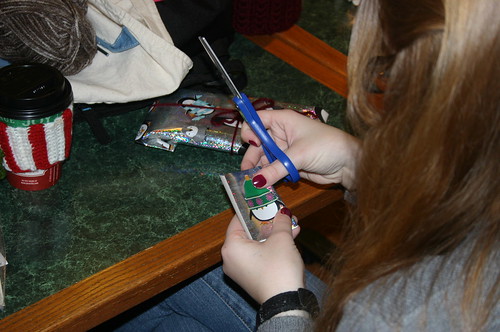
One of the most intriguing experiences of my upper division class on handcrafting, now drawing to a close, has been the attempt to reintegrate the work of the hand and the work of the mind. At every class, students' hands have been busy, knitting, crocheting, winding yarn. At every class, too, we have worked through ideas in vigorous, sometimes knotty discussions.
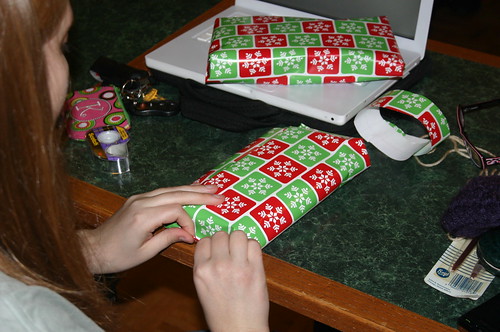
The last time we met, we engaged our hands in a new workshop activity -- wrapping our work for presentation to those for whom we made it. We bent our minds to the task of making sure everyone on our list was cared for.
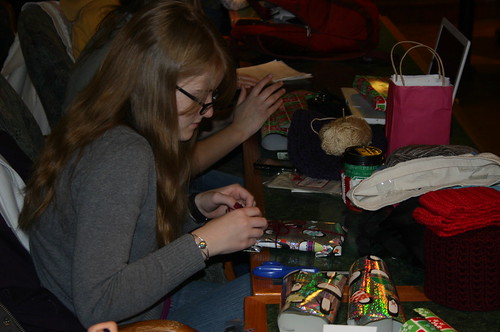
While I cross-checked our roster of handmade hats with the list of recipients, students came forward in a steady stream to assume the tasks of cutting, labeling, fastening, and tying.

What connects the mind to the hands? The learning process itself, where we transform language and perceptions into understanding and finally replication. That day, as at every class meeting, someone showed someone else a new technique or a more efficient movement. The learner watched, formed an image of how to do it in his imagination, then tried it himself. So was the mind formed and the hands trained together.
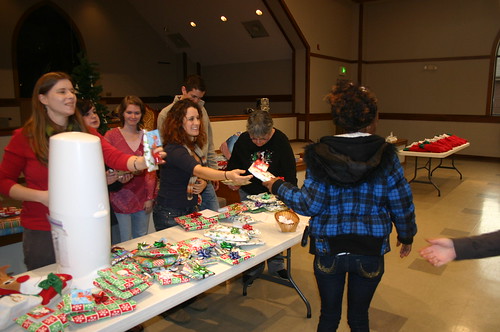
And then we used our hands to reach out. To pass along their work.
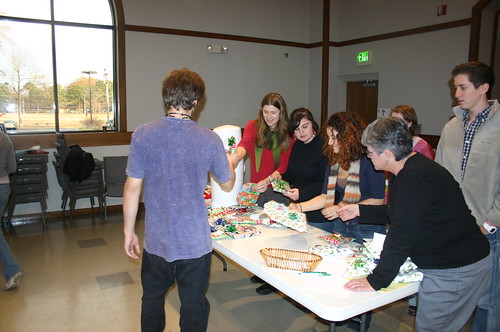
To touch. To give. To hold. To lead.
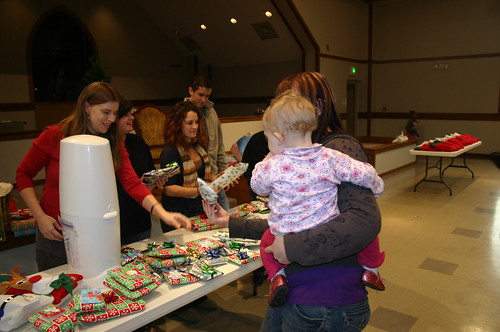
As we stirred, we were stirred. As we created, we were created. Connecting minds and hands turned out to entail more than our own minds and our own hands. Some of the hands we touched, the ones that opened our packages and fitted our hats to their children's heads, will someday make something themselves -- re-enacting the images at the top of this post. What could be a better argument for an education that bridges the divide between mental and manual work?
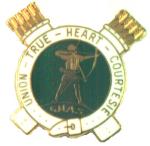
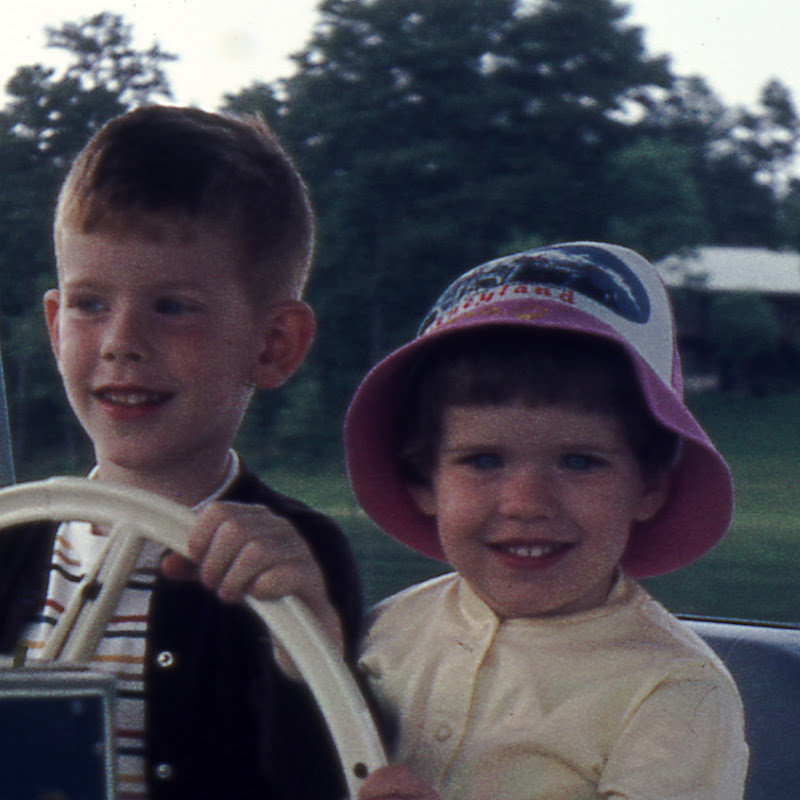

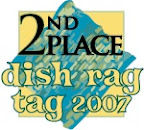

No comments:
Post a Comment